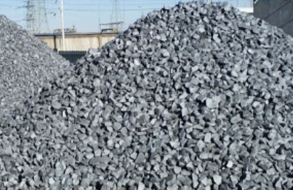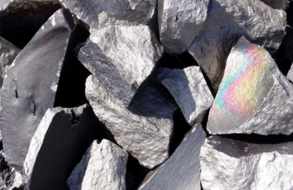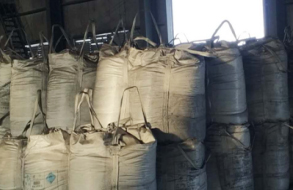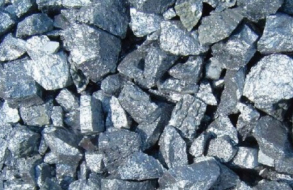Silicomanganese prices to drop before Spring Festival
----Interview with Zhao Jiangfeng
General Manager
Guizhou Zhuoxun Mining Co., Ltd.
- Guizhou Zhuoxun Mining Co., Ltd., located in Xingyi, Guizhou, mainly produces silicomanganese. It is one of several local silicomanganese factories. The company aims to achieve a win-win via cooperation and always pursues the best interests of its partners, providing reliable products.
- Asian Metal: Would you please give a brief introduction on your company?
- Mr. Zhao: We mainly produce national-standard silicomanganese 65/17, most of which is supplied to surrounding steel mills. We usually purchase manganese ore, including mainstream manganese ore such as South African manganese ore 37.5%min, Australian manganese ore at ports with a combination of D/P and D/A. We adjust the purchase according to the spot price of manganese ore.
- Asian Metal: How about your company's production in 2018?
- Mr. Zhao: Our equipment started normal operation in March 2017. Now we only operate a 9,000KVA submerged arc furnace to produce silicomanganese 65/17. Our average daily output is 63t, and the monthly output is almost 2,000t. The total output in 2018 was around 23,000t. We have regular buyers, so we hardly hold inventory.
- Asian Metal: Silicomanganese prices kept at high levels throughout 2018. In your opinion, what was the main support?
- Mr. Zhao: The high silicomanganese prices benefited from the high demand from downstream steel mills. From January to October, rebar prices in China continued to rise with profits even exceeding RMB1,000/t (USD145/t), so the operating rate of steel mills was high, and the demand for silicomanganese was relatively strong. Although the profit of steel per ton started dropping in November, as the water cooling process for rebar was prohibited from November 1, steel mills had to use more manganese and vanadium to increase the strengthen of steel, which also boosted the demand for silicomanganese to a certain extent. Steel mills conducted maintenance by the year-end, but consumers began replenishing for the Spring Festival holiday in early February, so the demand was still strong, and silicomanganese prices hovered at high levels.
- Asian Metal: Silicomanganese prices moved down at the end of 2018. In your opinion, what was the main reason?
- Mr. Zhao: On the one hand, a main reason was the decreased production cost of silicomanganese owing to lower prices of raw material manganese ore. At the same time, consumers began to force purchase prices down while the profit of steel dropped. In order to recoup funds at the year-end, producers undersold appropriately. Moreover, there were more transactions that concluded at low prices, which also had a significant negative impact on market prices. On the other hand, the operating rate of silicomanganese plants picked up driven by the high profit, so the spot supply increased, which was also a reason behind the decline of silicomanganese prices.
- Asian Metal: The costs of overseas manganese ore hovered at high levels in 2018, so what was the profit margin of silicomanganese?
- Mr. Zhao: Generally speaking, the profit margin of silicomanganese was relatively stable. For us, the average profit of silicomanganese in 2018 increased compared with that in 2017. Ulanqab in North China had a more obvious price advantage. The highest profit margin in North China exceeded RMB1,000/t (USD145/t) from August to September; the profit margin in South China was lower as the costs of electricity and coke were both higher than those in North China.
- Asian Metal: What are the advantages and disadvantages of your company compared with other silicomanganese plants in Guizhou?
- Mr. Zhao: One of the advantages is the electricity charge. The electricity charge is relatively cheap thanks to the competition between local grid company and China Southern Power Grid. We are using the electricity from China Southern Power Grid now. The electricity price is RMB0.39/KWH (USD0.06/KWH), which is significantly lower than the charge of RMB0.52/KWH (USD0.08/KWH) in other regions of Guizhou. The main disadvantage is high transportation cost. The transportation costs of silicomanganese and coke are higher than those for the surrounding producers. We usually purchase manganese ore in Qinzhou Port. Compared with other areas in Guizhou, the transportation cost in Xingyi is indeed higher, and the transportation cost of coke from North China is also relatively high.


- Asian Metal: Although silicomanganese prices slightly dropped in December 2018, consumers' demand is expected to rise in January 2019 due to the replenishment. What do you think of the silicomanganese market in January 2019?
- Asian Metal: According to the current market trend, the profit margin of silicomanganese would continue to shrink in January 2019. As more plants are expected to suspend production before the Spring Festival, the supply may be less than demand in a short term in South China, and the price is expected to stop dropping and show a stable trend. Meanwhile, in January 2019, lots of consumers intend to replenish silicomanganese for one- or two-week production during the Spring Festival holiday, so the demand for silicomanganese is forecast to increase. The spot supply in South China is tighter than that in North China, so I believe silicomanganese prices in South China in January would stop dropping and stabilize; however, considering silicomanganese prices have been decreasing since early December 2018, silicomanganese prices in January 2019 are forecast to move down by around RMB400-500/t (USD58.33-72.92/t) compared those in December 2018.
- Asian Metal: The water cooling process for rebar was prohibited in November 2018. Did the demand for silicomanganese significantly increase?
- Mr. Zhao: The demand for silicomanganese from lots of small private steel mills rose remarkably after the water cooling process for rebar was prohibited in November, but the demand from our downstream consumers showed no significant change and remained stable.
- Asian Metal: Thanks for taking our interview.
- Mr. Zhao: Thanks.




